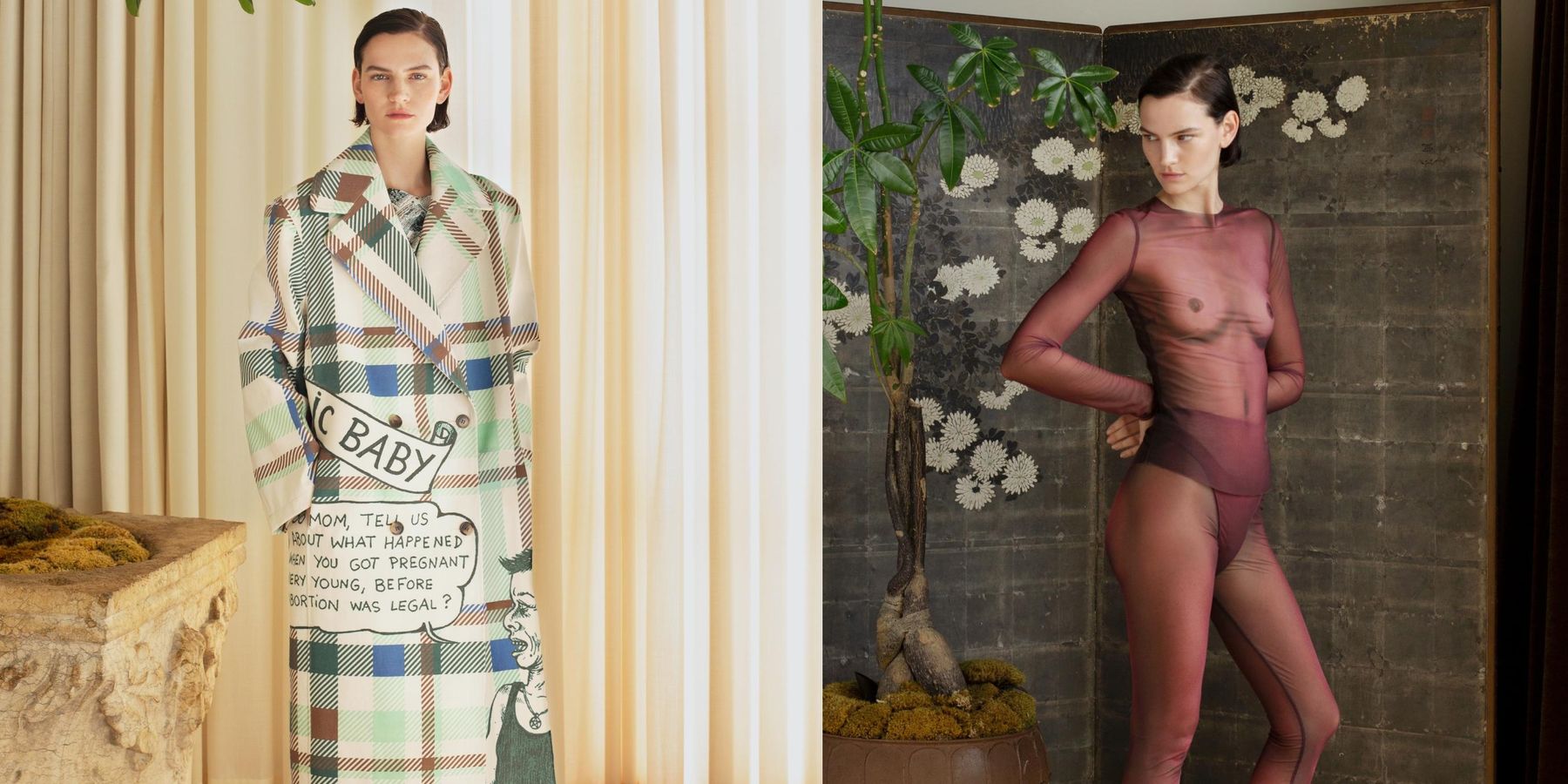
Fashion
Lizzie Grover Rad's First Collection Centers Abortion and Female Liberation
by Trishna Rikhy
05 April 2022

If fashion is an art and art is supposed to say something, then enter stage left Lizzie Grover Rad. The LA-based tech entrepreneur slash interior design mogul (and wife of Tinder co-founder Sean Rad) is turning her empowered, feminist lens to the world of fashion.
With Collection 001 of her eponymous label, Grover Rad, she's centering one of the most tenuous issues in society: abortion, and with it, a woman’s autonomy over her own body. In collaboration with mother/daughter duo Aline Kominsky-Crumb and Sophie Crumb (as well as the David Zwirner Gallery), Grover Rad is using fashion as a medium to start conversations about things like women’s liberation and female self-empowerment.
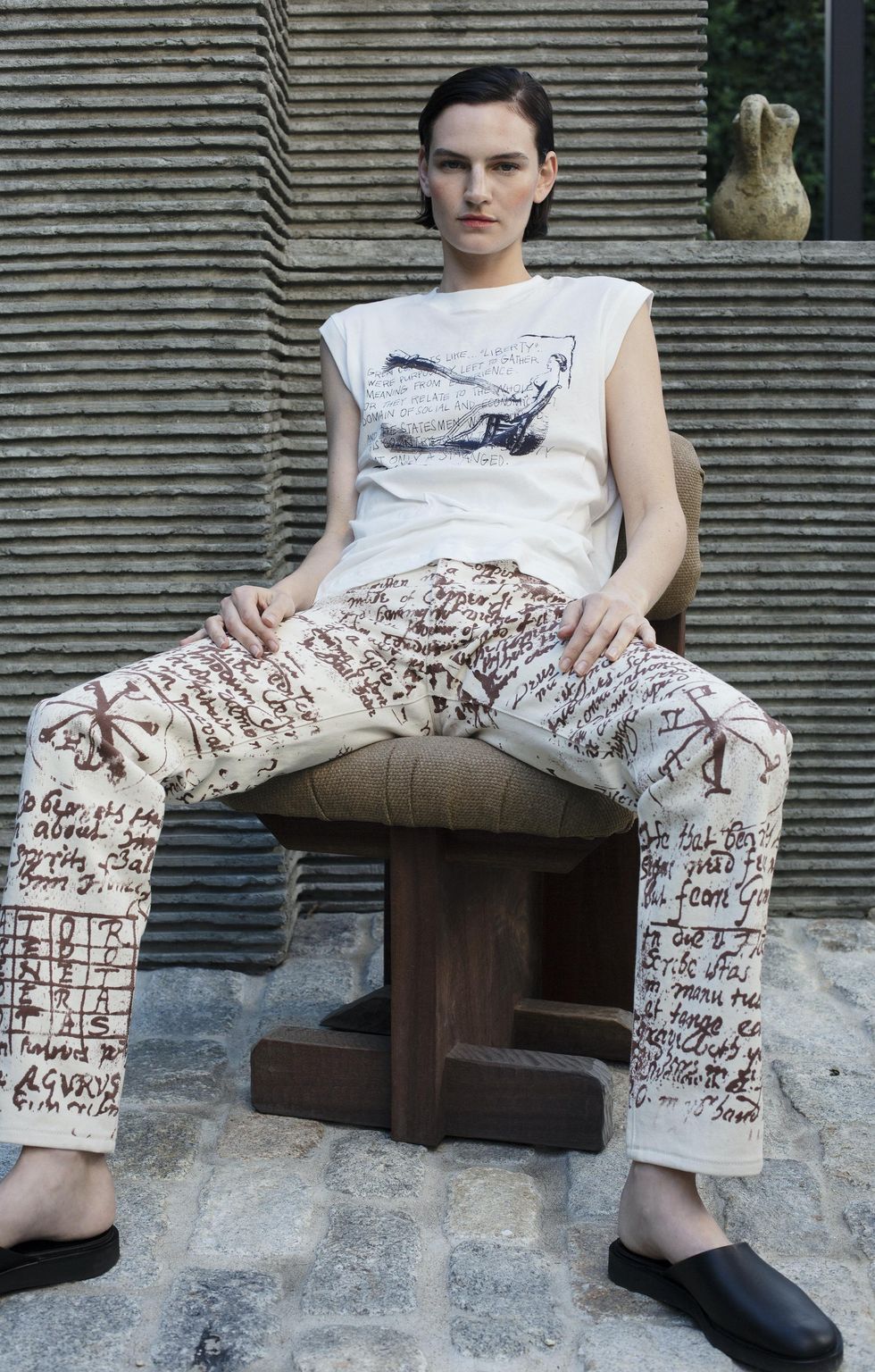
Imagery drawing on motifs from over 400 years of grappling with the woman-centric debates infuse modern silhouettes with a purposeful, potent message; The Scarlet Letter and Hester Prynne are manifested in deep crimson graphics, splattered across pants and dresses, while the Crumb comic book graphic on a coat, scarf, and midi skirt fixate on modern abortion rights — specifically, Texas’s Senate Bill 8 of 2021, and the possible overturning of Roe v. Wade.
In the 49 years since Roe v. Wade was passed in the Supreme Court, abortion has still not become an accessible right for all women. Lizzie Grover Rad knows this, and Grover Rad the label emphasizes it. Grover Rad is fashion, but with a purpose, a statement, and in Collection 001, a demand to know: is the female body liberated, or commodified?
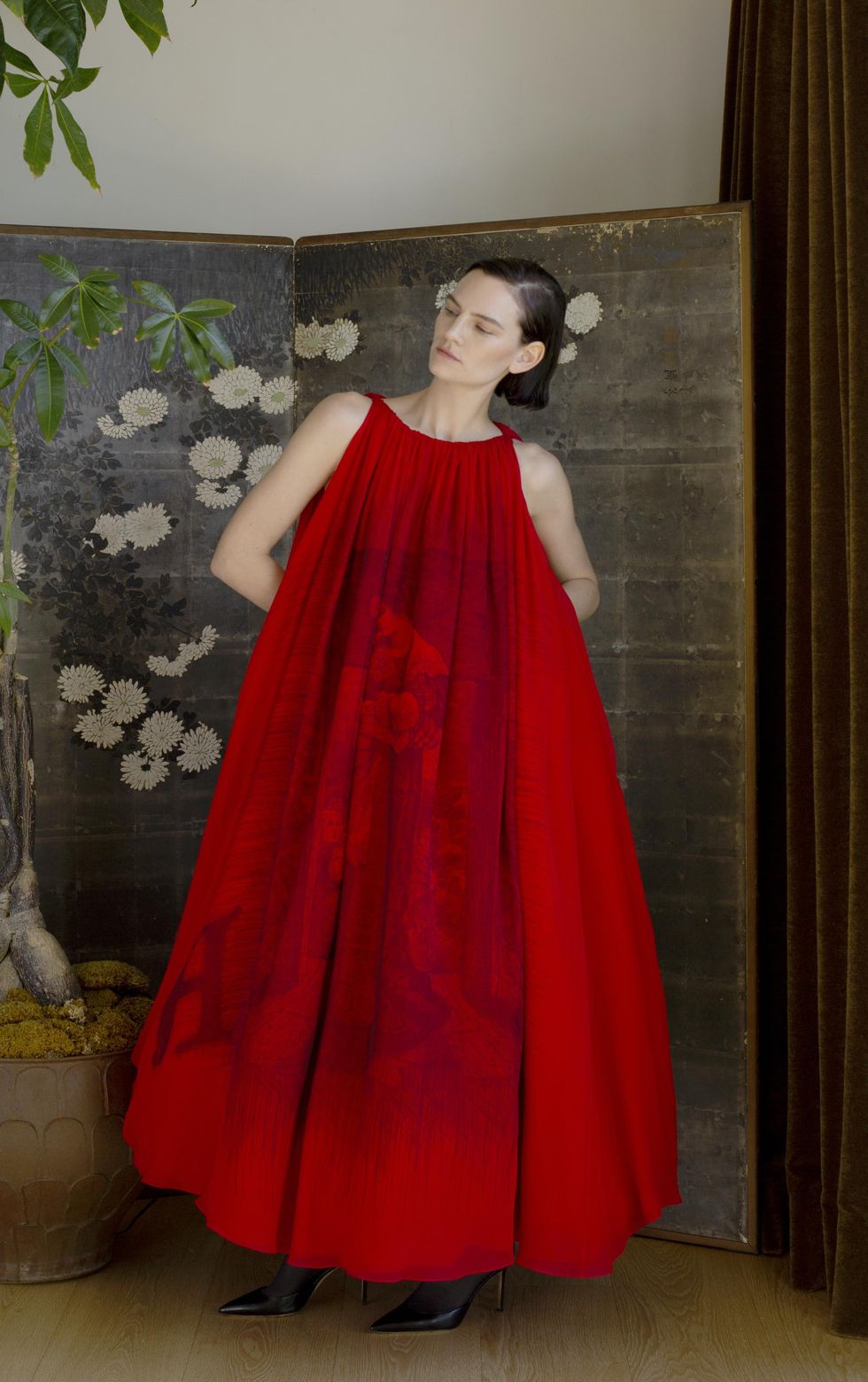
Tell me a little bit about how Grover Rad got started.
I’ve always loved fashion and kept a close eye on it, even though I came from the interior design world and the tech world. I’ve seen so many shifts happening, especially in the past two years, with people becoming more vocal and wanting to express their viewpoints and where they stand on things. I don’t see why their clothing shouldn’t also play a role in that, and be another way to express your viewpoint or who you align with and where you stand.
I’ve always taken that standpoint, but I wanted to start a brand that also gave other people the opportunity to do that. I wanted to create garments that have this balance between wearability and creativity and art form and expression, and explore how you can make these really difficult conversations and topics palatable and wearable. That’s where I set out to try to blend those two ideas and merge them together.
What is it like making the transition from tech to fashion for you?
Well, I was ready to leave the tech world. It was fun while it lasted, but I was ready. And from interior design, I think there are so many similarities, but what was holding me back in interior design was that people’s homes are their sanctuaries. They’re not really going to take risks, and I’m all about taking risks and trying things on for size, in a way, or expressing something and the next day being able to achieve it, and interiors are not really like that. They’re pretty permanent, in a way. For me, it was the best of both worlds; you get the fluidity and the seasonal aspect of fashion, but with the additional bonus of being able to express and do crazy things, and the next season I can do it all over again. I’m not married to this one thing forever.
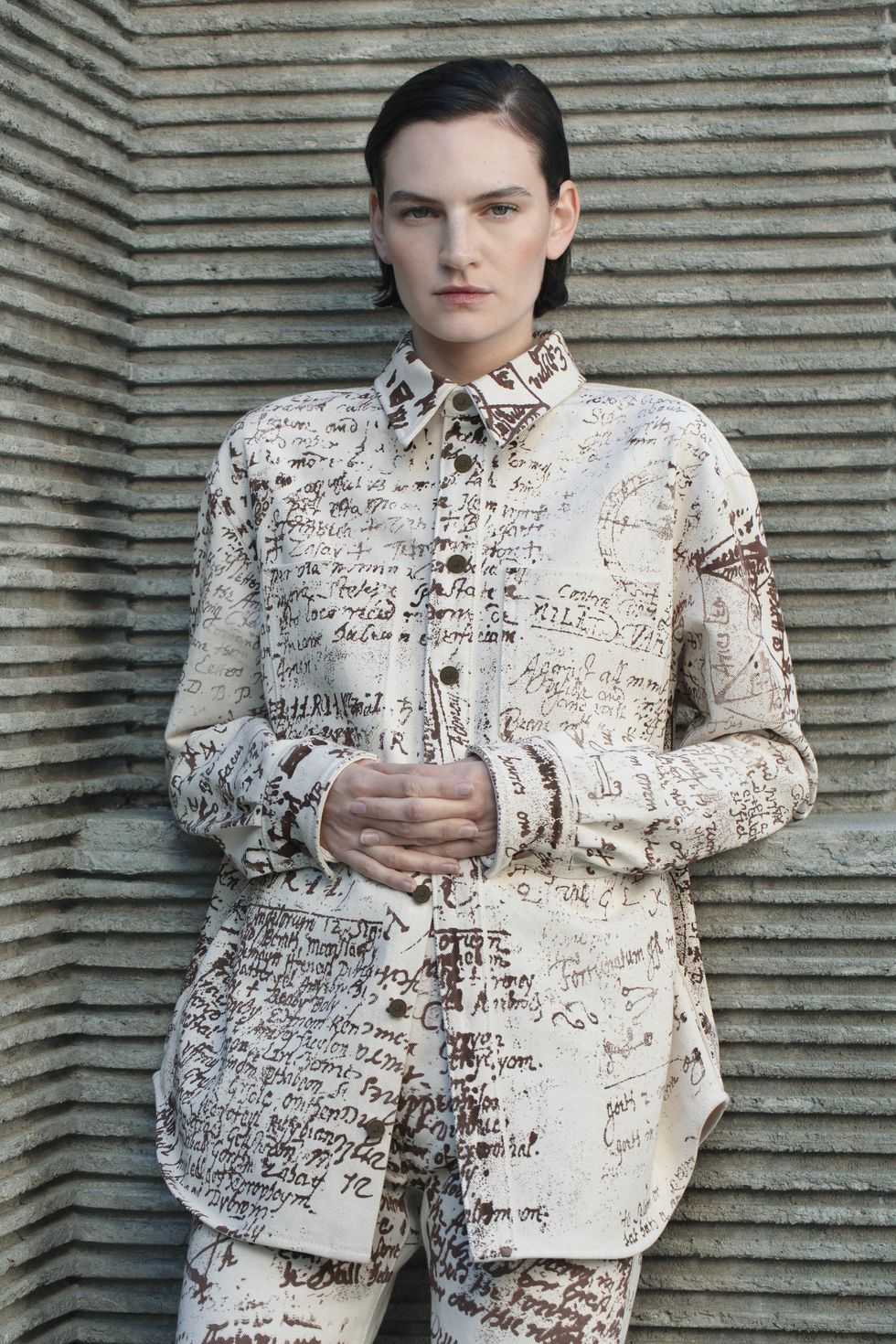
Can you tell me a little bit about what inspired this first collection? How did these elements of abortion and witchcraft come to you?
With everything happening at the time in Texas, but now all over the deep south, it was very clear to me that I wanted that to be my first collection topic. It was so glaringly obvious to me that that was the one. I went down just thinking about historical references. I’m obsessed with history, my husband calls me a Luddite, but pulling historical references is really how my brain works. Seeing and finding connections and what influenced what. My earliest references are the witch and Salem Witch Trial references, and thinking about Puritan New England and how similar it is to society right now, which is pretty alarming and scary.
I ran with that, women being persecuted for not being good wives or not being good daughters, or women of society persecuted just because they were different. I pulled in The Scarlet Letter and Hester Prynne, an important icon at the front of that. I was thinking about tying it into contemporary art and what’s happening in our world. I referenced a lot of contemporary artists, like Sarah Lucas, Tracy Emin, Louise Bourgeois, tying it over the course of 400-plus years and thinking about that holistically.
What was it like working with Aline and Sophie on the comic strip for this collection?
It was really fun! They’re characters, I loved that process. I spoke to Aline for the first time around six months ago, and our mutual friend reached out and positioned my idea. She lives in France and I got a call the next morning around 8 AM, and they had already started working on the comic. It was something that was so personal to them that they ran with it and were so inspired. It was a fun process. Seeing them and meeting Aline for the first time in Paris a few weeks ago, she told me about how she wasn’t sure how these would come to life, and it was really fun to see their reactions at the gallery opening and to see their work on the clothes. I think that was a special, coming full-circle moment.
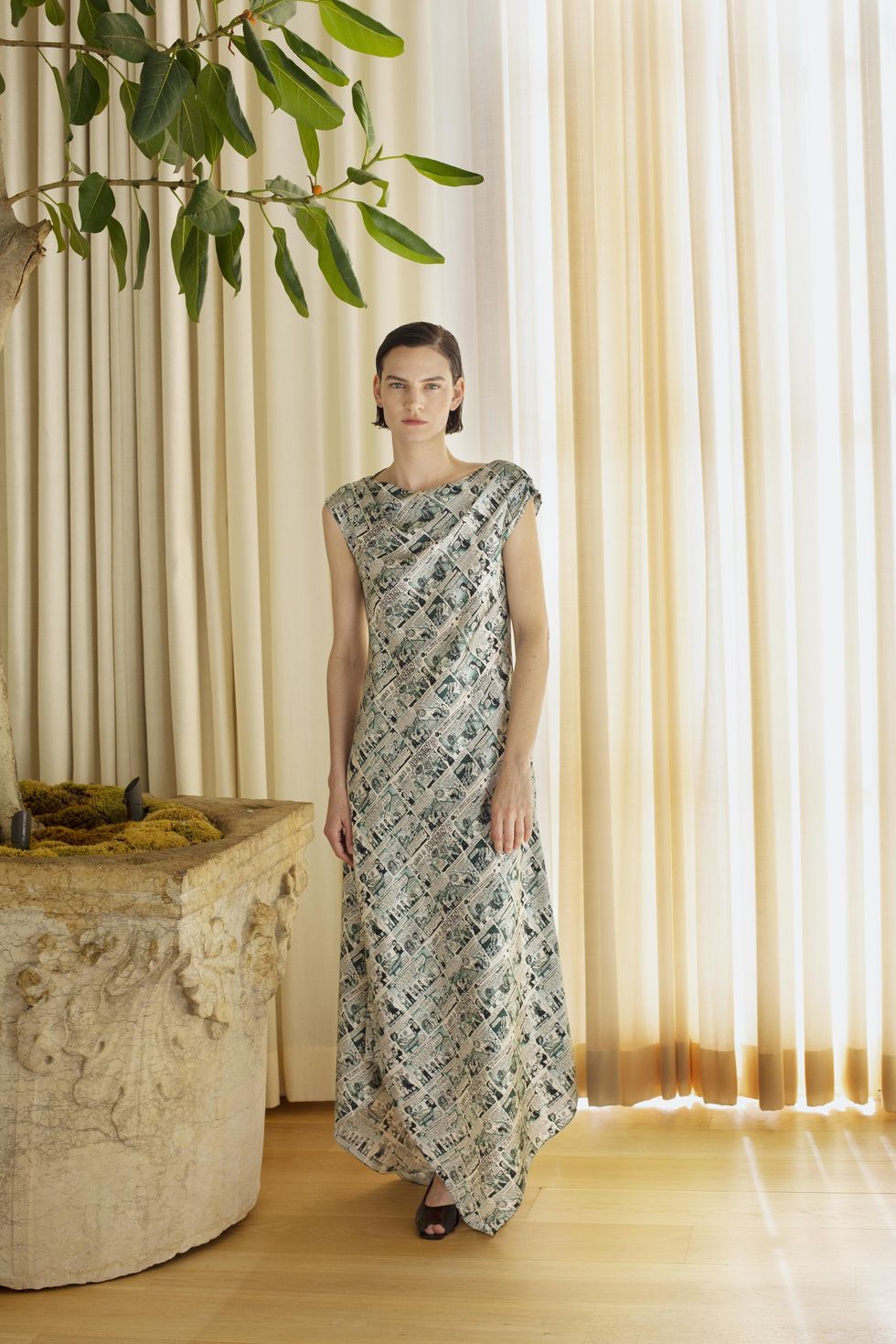
Can you tell me a little bit about the Crumb print that serves as a motif throughout the collection?
Aline and Sophie only do autobiographical work, so they had numerous reproductive health, abortion stories to work with. They narrowed it down to four pages, which is still a lot. I wanted to create a range of how that work would come into play. On two of the pieces, the Bias Dress and the Opera Coat, I have it as a repeating motif, kind of like a wallpaper, in a way. I was thinking about it was this really difficult topic, and it’s entitled “4 Shades of Abortion”...it’s not an easy thing to have printed on a dress or a jacket that you’re wearing.
I wanted to think about it as, how can you subliminally get this message through? I thought about it as a wallpaper, so it’s repeating and it’s not as overtly in your face. For two of the pieces, I wanted it to be more overt, so I deconstructed the comic and I put it on the plaid coat, so some of the text appears larger, and then on the scarf, where the visuals are deconstructed and abstracted out of the comic.
The collection asks the question: is the female body really liberated? What do you think?
I’m not pretending like I know the answers. I just wanted to create clothes that start conversations, and as another way of expressing your viewpoints or wearing how you feel about a certain topic. So I don’t feel as though I’m in a position to say whether or not the female body is or is not liberated…but I would say no, considering what’s happening in the south and the fact that Roe v. Wade is being threatened. I think that is a sign enough that it’s not liberated.
What can we expect in future collections?
I’m not talking about the future collection topics, but I will say that in designing the next couple of collections that are coming up in the pipeline, something that wasn’t intentional but a common theme that keeps coming up in things I’m finding is patriarchy. So that seems to be something that’s recurring inadvertently that I’m excited about.
Photos courtesy of Grover Rad